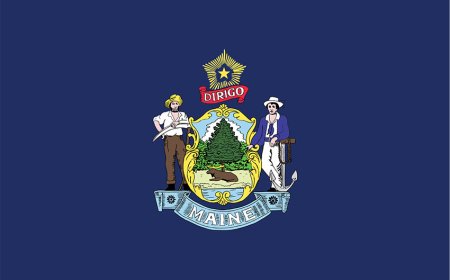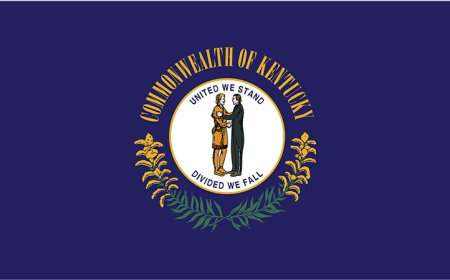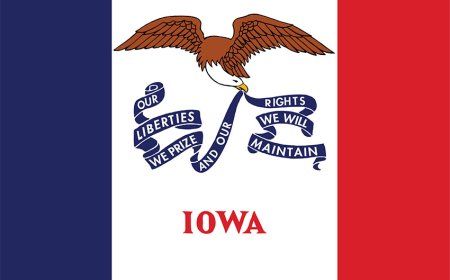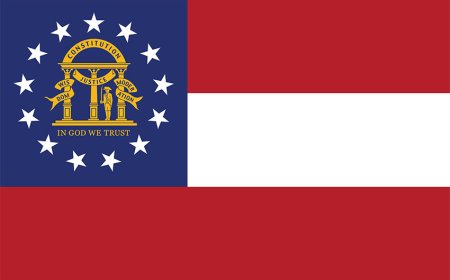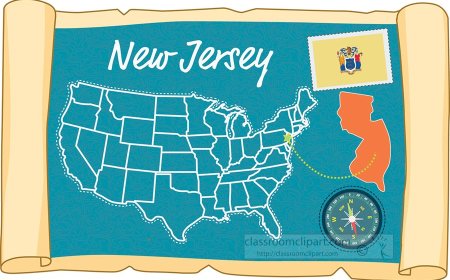North Dakota State Guide for Students | History, Landmarks, Culture & Geography
Discover North Dakota’s geography, history, people, and natural beauty in this student-friendly guide. Includes quiz, vocabulary, and fun facts for grades 6–9.
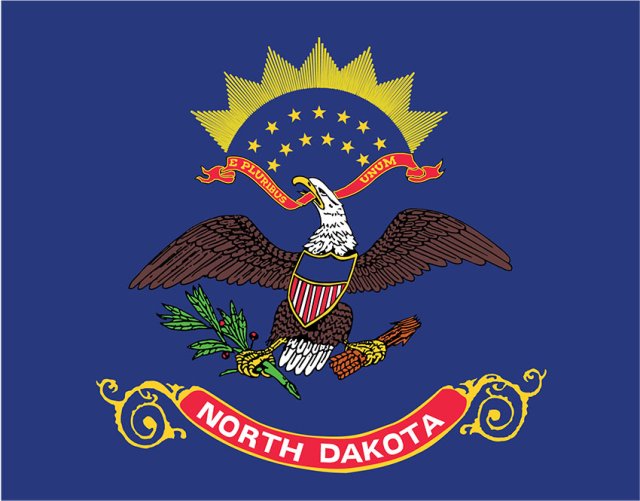
North Dakota: The Peace Garden State
Introduction
North Dakota is known as “The Peace Garden State,” a nickname that reflects its peaceful beauty and strong relationship with neighboring Canada. Located in the northern Great Plains, North Dakota is full of open prairies, rolling hills, and majestic badlands. It’s a land of big skies and few crowds, where agriculture, Native American heritage, and pioneer history shape daily life. Though quiet and rural, North Dakota plays a big role in America’s food supply and energy production.
Quick Fact Box
- State Name: North Dakota
- Nickname: The Peace Garden State
- Capital: Bismarck
- Largest City: Fargo
- Statehood: November 2, 1889 (39th state)
- Population: About 780,000
- State Bird: Western Meadowlark
- State Flower: Wild Prairie Rose
- State Tree: American Elm
- State Motto: “Liberty and union, now and forever, one and inseparable”
- Major Industries: Agriculture, oil, wind energy, tourism
Where in the USA is North Dakota?
North Dakota is located in the Upper Midwest, bordering Canada to the north, Minnesota to the east, South Dakota to the south, and Montana to the west. It is part of the vast Great Plains region, where the land is mostly flat or gently rolling.
The Missouri River cuts across the state and creates fertile farmland and scenic river valleys. North Dakota is divided into three regions: the Red River Valley in the east, the Missouri Plateau in the west, and the rugged Badlands near Theodore Roosevelt National Park.
Landmarks and Attractions
North Dakota offers many unique and natural places to explore. One of the most famous is Theodore Roosevelt National Park, where you can see bison, wild horses, and prairie dogs roaming free. This park honors the president who once ranched in the area and loved its wild spirit.
The International Peace Garden sits on the border between North Dakota and Canada. It celebrates the friendship between the two nations with flower displays, monuments, and peaceful walking trails.
In the capital city of Bismarck, you’ll find the North Dakota Heritage Center & State Museum, which showcases dinosaur fossils, Native American artifacts, and early settler life. The city of Fargo is known for its arts, music, and quirky museums like the Roger Maris Museum, honoring the famous baseball player.
State Symbols & Emblems
The state bird of North Dakota is the Western Meadowlark, a yellow-bellied bird with a cheerful song. The Wild Prairie Rose, the state flower, grows along roadsides and prairie fields. The American Elm is the state tree, once found in nearly every North Dakota town.
North Dakota’s motto—“Liberty and union, now and forever, one and inseparable”—comes from a famous speech by Daniel Webster and expresses unity and loyalty to the country.
People, Culture & Economy
North Dakota has a strong culture rooted in its Native American, Norwegian, German, and Ukrainian heritage. Native American communities such as the Lakota, Dakota, Mandan, Hidatsa, and Arikara have lived in this area for centuries and continue to play a key role in state culture.
North Dakota’s economy is based on:
- Agriculture – Top producer of wheat, barley, sunflowers, and soybeans
- Oil and Gas – The Bakken Formation in western North Dakota is rich in oil
- Wind Energy – Flat lands ideal for wind farms
- Technology and Finance – Growing in cities like Fargo and Grand Forks
- Tourism – Nature, history, and local festivals
Even though it’s not highly populated, the state has a strong work ethic and a close-knit community.
Famous People from North Dakota
- Theodore Roosevelt – U.S. President who lived and ranched in the Badlands
- Roger Maris – Baseball legend who broke Babe Ruth’s home run record
- Josh Duhamel – Actor and model, born in Minot
- Peggy Lee – Jazz and pop singer, born in Jamestown
- Louis L’Amour – Western novelist, born in Jamestown
- Chester Reiten – Founder of North Dakota’s Norsk Høstfest
- Carson Wentz – NFL quarterback, born in Bismarck
- Tom Brosseau – Folk musician, born in Grand Forks
Climate, Ecosystems & Conservation
North Dakota has a continental climate, with very cold winters, hot summers, and strong winds. Winter snowstorms are common, and temperatures can drop well below zero. Summers are warm and perfect for growing crops.
The state’s ecosystems include prairies, river valleys, wetlands, and badlands. Wildlife such as bison, white-tailed deer, coyotes, eagles, and burrowing owls live here. Conservation groups work to protect grasslands, manage grazing lands, and safeguard endangered species.
The Prairie Pothole Region contains thousands of small wetlands that are crucial for migrating birds. These natural areas help maintain biodiversity and water quality.
Government, Education & Everyday Life
North Dakota’s government includes a governor, a legislature, and a judicial branch. The state capital is Bismarck, and each county has its own local government. There are also Native American tribal governments with sovereign rights over their reservations.
The state values education, with strong public schools and major universities such as the University of North Dakota (UND) and North Dakota State University (NDSU). Students often study agriculture, aviation, engineering, and energy sciences.
Daily life often revolves around farming, school sports, hunting, ice fishing, and community events. Small towns and friendly neighbors make for a close-knit atmosphere.
Fun Facts
- The geographic center of North America is near Rugby, North Dakota.
- North Dakota grows more sunflowers than any other U.S. state.
- The Peace Garden stretches across the U.S.–Canada border.
- Theodore Roosevelt National Park has no fences—bison roam free!
- North Dakota has more wildlife refuges than any other state.
- The state once had a “man camp” boom during the oil rush.
- Fargo was made famous by the Coen Brothers’ movie, though most of it wasn’t filmed there.
Vocabulary Words
- Badlands – Dry, eroded land with steep slopes and rocky formations
- Prairie – Flat or gently rolling grasslands with few trees
- Biodiversity – Variety of life in a certain habitat
- Heritage – Cultural traditions and history passed down through generations
- Sovereign – Having the right to govern independently
- Continental Climate – A climate with large differences between summer and winter temperatures
- Refuge – A safe place for wildlife
- Formation – A layer of rock or soil that holds oil or gas
- Unity – Coming together as one; togetherness
- Grazing – Letting animals eat grass in a field or pasture
Kid-Friendly Summary
North Dakota is a calm and peaceful state with lots of open space, prairie dogs, and bison! It has farms that grow tons of wheat and sunflowers, and it gets very cold in the winter. You can visit cool places like the Badlands and the Peace Garden. Life in North Dakota is full of nature, family, and working together.
Quiz: Test Your North Dakota Knowledge!
What is North Dakota’s nickname?
a) The Garden State
b) The Empire State
c) The Peace Garden State
d) The Golden State
What national park is in North Dakota?
a) Yosemite
b) Yellowstone
c) Theodore Roosevelt National Park
d) Grand Canyon
What is the capital of North Dakota?
a) Fargo
b) Minot
c) Bismarck
d) Grand Forks
What country borders North Dakota to the north?
a) Mexico
b) Canada
c) Russia
d) Greenland
What kind of energy is growing in North Dakota?
a) Solar
b) Coal
c) Wind
d) Nuclear
What flower is North Dakota’s state flower?
a) Sunflower
b) Wild Prairie Rose
c) Violet
d) Tulip
What is North Dakota’s largest city?
a) Bismarck
b) Minot
c) Fargo
d) Williston
Who is a famous baseball player from North Dakota?
a) Babe Ruth
b) Derek Jeter
c) Roger Maris
d) Jackie Robinson
What kind of animal roams free in Theodore Roosevelt National Park?
a) Tigers
b) Bison
c) Bears
d) Lions
What color is the Western Meadowlark’s belly?
a) Blue
b) Red
c) Yellow
d) White


















































